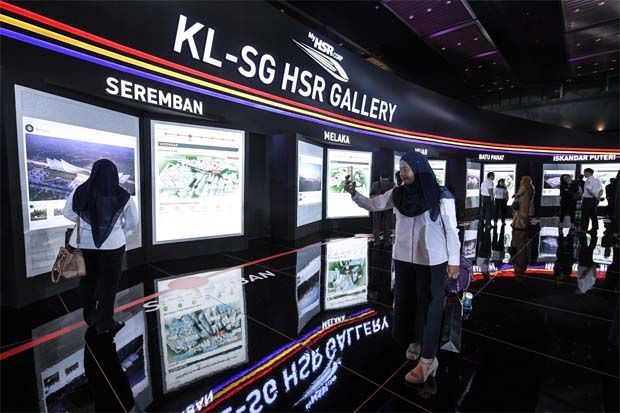Debate over whether Malaysia needs the High-Speed Rail
PRIME Minister Tun Dr Mahathir Mohamad has said he’ll cancel a planned high-speed railway that was intended to reduce journey times between Kuala Lumpur and Singapore from about five hours to 90 minutes.
Bloomberg Opinion columnists David Fickling and Adam Minter debate the topic.
David Fickling: I think we both agree that high-speed rail, or HSR, doesn’t make sense in all areas. The economic benefits can be surprisingly slight and depend a lot on construction cost, population density, route length and ticket pricing. But Singapore-Kuala Lumpur seems to me to be one of the corridors where it would clearly work.
It’s overtaken Hong Kong-Taipei as the world’s busiest international air route and the potential travel time puts it well within the range where rail can supplant aviation, which would also help free up space at airports. Add to that the huge reductions in CO2 emissions and it seems a no-brainer to me. What’s not to like?
Adam Minter: On the surface, there’s much to like. But is it necessary?
At the 2015 signing ceremony, then-Malaysian Prime Minister Najib Razak envisioned a glamorous future in which one “can have breakfast in Kuala Lumpur, lunch in Singapore and be back in time for dinner in Kuala Lumpur.”
But one can already do that (I’ve done it!) by boarding one of the more than 30,000 flights per year between the two cities, most of which are operated by low-cost airlines. Book early, and you often won’t pay more than $100 per round-trip.
Can HSR compete? Both governments indicate they’re looking at a roughly $100 round trip (highly speculative, considering the line wasn’t scheduled to be complete until 2026).
But that price will require subsidies, on top of steep and still uncertain construction and financing costs. With Malaysia’s current fiscal issues, and more pressing transportation needs, I don’t think that’s a necessary or responsible investment.
Fickling: We both agree that the aviation market on this route is impressive â“ but I see it as evidence of strong demand that HSR could meet, rather than a reason to dispense with this option.
Even if you cut the project’s estimates of 22 million passengers a year by half, it would have as much traffic as the London-Paris Eurostar â“ and those round-trip price estimates include the discounted cost of finance and construction, so it’s not implausibly expensive.
All HSR is built with government money because such networks are multibillion-dollar mega-projects that operate local monopolies â“ but that doesn’t mean they can’t pay for themselves.
Japan’s Shinkansen has long done without public operating subsidies, with the state only stepping in to fund the development of new lines.
There are significant second-order benefits, too: Singapore and Kuala Lumpur are the main destinations from each other’s airports, and releasing that capacity would go a long way to relieving the congestion that’s holding back the Malaysian capital’s development as an aviation hub.
Minter: I agree that high demand is a precondition to a successful high-speed rail development.
The problem is it’s difficult to predict demand a decade out â“ and boosters of these highly political projects have incentives to exaggerate.
I think Kuala Lumpur-Singapore suffers from that problem. Between March 2017 and February 2018, 4 million people flew the Singapore-Kuala Lumpur route. Yet as you note,
HSR’s supporters would have us believe that 22 million people will ride the line by 2036. Even cut in half, such a projection is unrealistic.
Which brings me back to costs. As many a tourist has learned, the Shinkansen is one of the most expensive ways to move around Japan â“ and that certainly is one factor that keeps it in the black.
By contrast, China’s HSR is wonderfully inexpensive and egalitarian â“ and loses money on all but a handful of routes. For Singapore-Kuala Lumpur to avoid being a long-term fiscal burden, it’d presumably need to follow Japan’s model, which would inevitably limit ridership from the lower-income Malaysian side.
Finally, I agree that HSR would relieve congestion at airports in Singapore and Kuala Lumpur.
But is it the cheapest way? Malaysia’s airport authority is working on a plan to double capacity at Kuala Lumpur over the next 10 to 20 years.
Though it won’t be cheap, it’ll be less expensive than the $28 billion that Prime Minister Mahathir claims HSR could cost. That’s a better option, at least for Malaysia. – Bloomberg
Source: https://www.thestar.com.my/business/business-news/2018/05/30/debate-over-whether-malaysia-needs-the-high-speed-rail/#w6OwbBo8KvWiVqCS.99


 Thailand
Thailand




